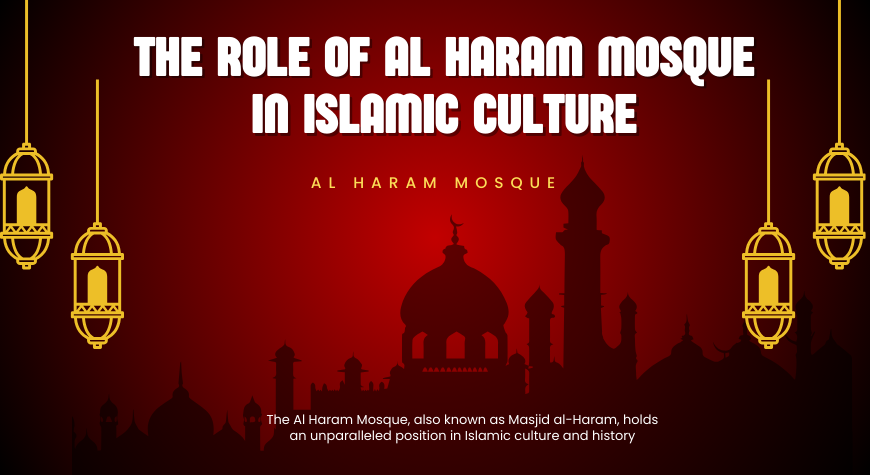The Role of Al Haram Mosque in Islamic Culture

The Al Haram Mosque, also known as Masjid al-Haram, holds an unparalleled position in the heart of Islamic culture. Located in the holy city of Mecca, Saudi Arabia, it is the largest mosque in the world and surrounds Islam’s holiest site, the Kaaba. This sacred sanctuary is central to the faith, spirituality, and history of over a billion Muslims worldwide.
Historical Significance
Foundation and Early History
- Origins: The mosque’s origins date back to the time of the Prophet Ibrahim (Abraham) and his son Ismail (Ishmael), who are believed to have built the Kaaba as a house of monotheistic worship.
- Pre-Islamic Era: Even before the advent of Islam, the Kaaba was a significant pilgrimage site for various Arabian tribes.
The Prophetic Era
- Re-dedication: Prophet Muhammad re-dedicated the Kaaba to the worship of the one true God, Allah, after his conquest of Mecca in 630 CE, cleansing it of the idols that had accumulated there.
- First Islamic Prayer: It is the site of the first congregational prayers led by Prophet Muhammad.
Religious Importance
The Kaaba The Qibla
- Direction of Prayer: Muslims around the world face the Kaaba during their five daily prayers, making it the qibla (direction) for prayer.
- Symbol of Unity: This practice symbolizes the unity and uniformity of the Muslim Ummah (community).
Pilgrimage Hajj and Umrah
- Hajj: Performing Hajj, the annual pilgrimage to Mecca, is one of the Five Pillars of Islam, obligatory for all able-bodied Muslims with the financial means to undertake the journey.
- Umrah: Unlike Hajj, which has specific dates in the Islamic lunar calendar, Umrah can be performed at any time of the year and involves a set of rituals that mirror .
Tawaf and Sa’i
- Tawaf: Pilgrims perform Tawaf by circumambulating the Kaaba seven times in a counter-clockwise direction, symbolizing the unity of believers in the worship of the One God.
- Sa’i: This ritual involves walking seven times between the hills of Safa and Marwah, reenacting Hagar’s search for water for her son Ismail.
Cultural and Social Impact
Architectural Marvel
- Expansion: Over the centuries, the Al Haram Mosque has undergone numerous expansions and renovations to accommodate the growing number of pilgrims. Today, it can hold over two million worshippers.
- Features: The mosque complex includes significant structures such as the Black Stone (Hajr Aswad), the Maqam Ibrahim (the station of Abraham), and the Zamzam Well, all of which have deep spiritual significance.
Center of Islamic Learning
- Educational Hub: The mosque has historically been a center of Islamic learning and scholarship. Scholars and students gather here to study the Quran, Hadith, and other Islamic sciences.
- Libraries and Schools: The complex houses extensive libraries and institutions that contribute to the preservation and dissemination of Islamic knowledge.
Symbol of Unity and Peace
- Global Gathering: During Hajj, Muslims from every corner of the globe gather in Mecca, transcending ethnic, linguistic, and cultural barriers, fostering a sense of global Islamic brotherhood and sisterhood.
- Humanitarian Efforts: The Kingdom of Saudi Arabia, through the mosque’s administration, engages in extensive charitable activities, supporting pilgrims and providing for their needs during the pilgrimage seasons.
Modern Developments
Technological Integration
- Infrastructure: Modern technology has been integrated into the mosque’s infrastructure, including advanced crowd management systems, climate control, and state-of-the-art facilities for pilgrims.
- Live Broadcasts: The rituals performed at the Al Haram Mosque are broadcast live, allowing Muslims worldwide to partake in the spiritual experience from afar.
Environmental Sustainability
Green Initiatives: Recent developments focus on sustainability, with efforts to reduce the environmental impact of the millions of annual visitors, including waste management and the use of renewable energy sources.

